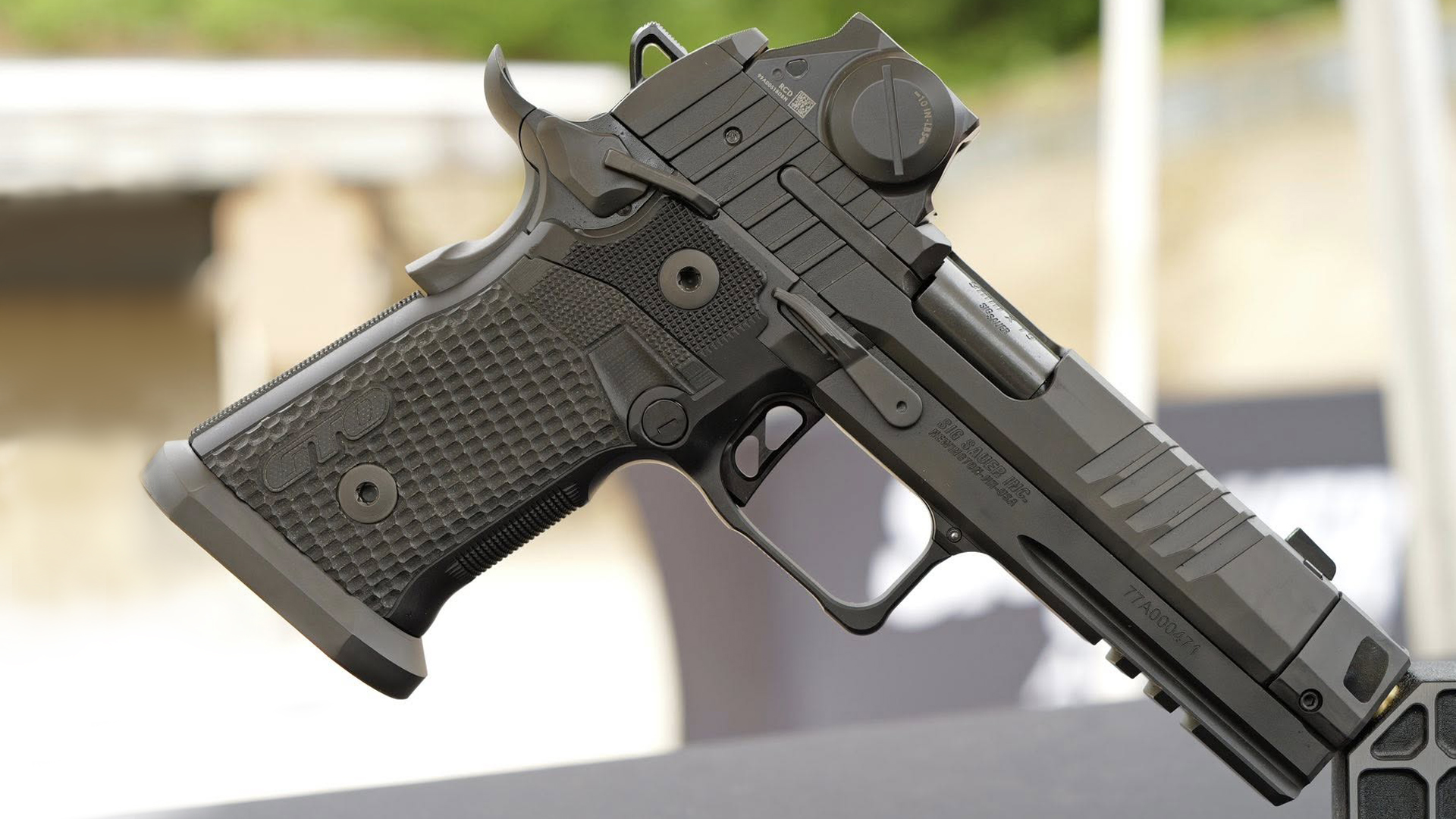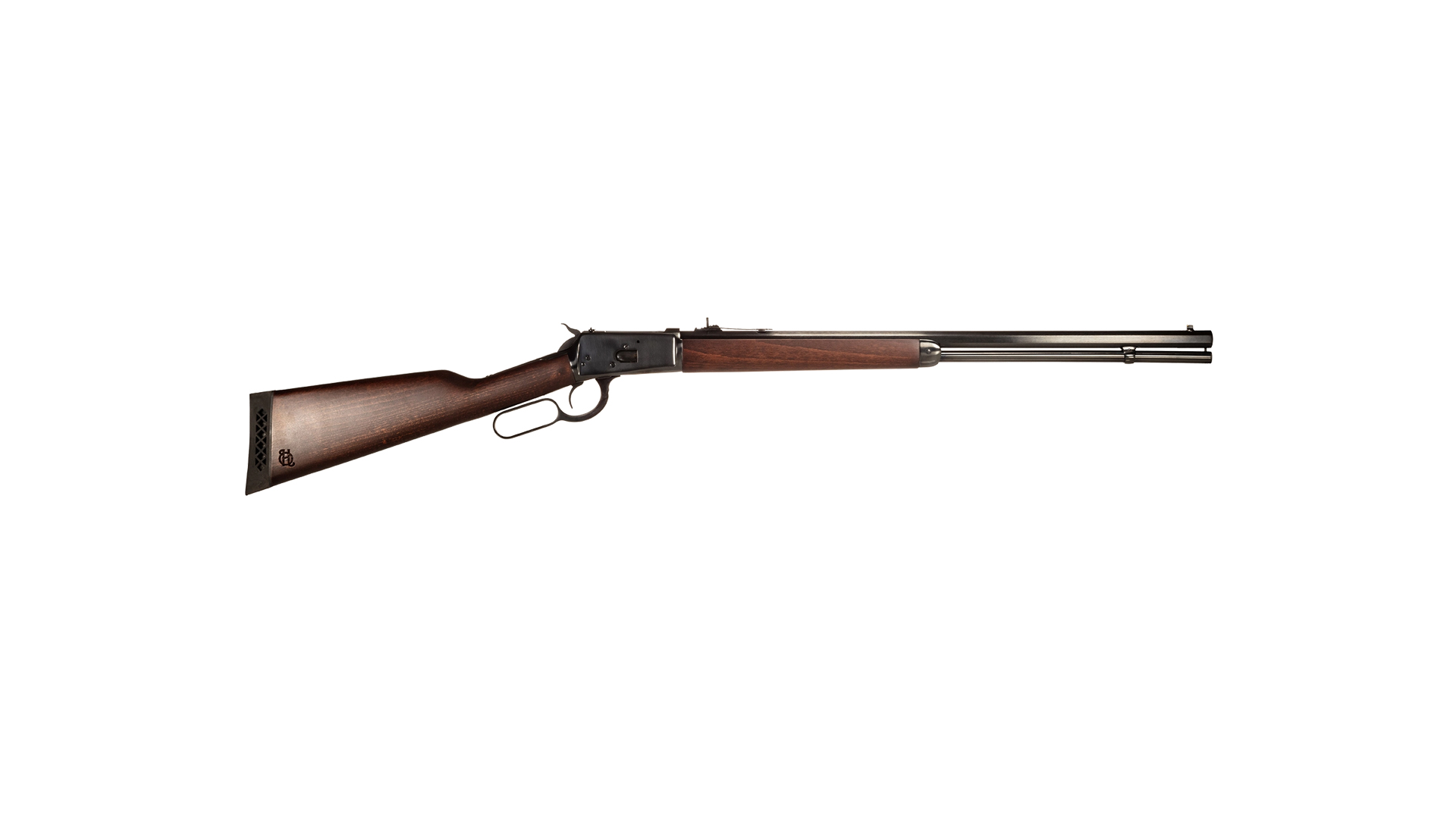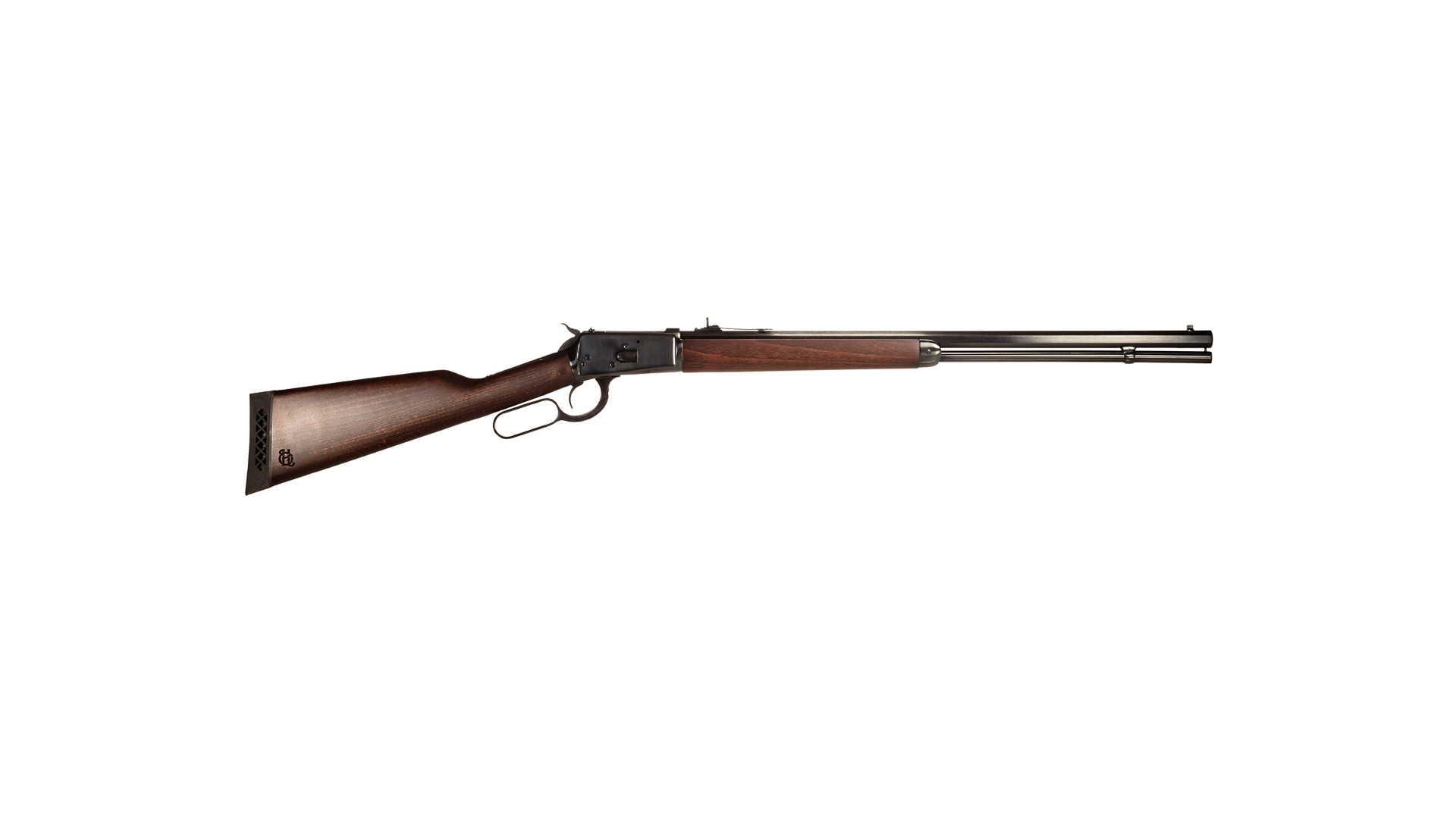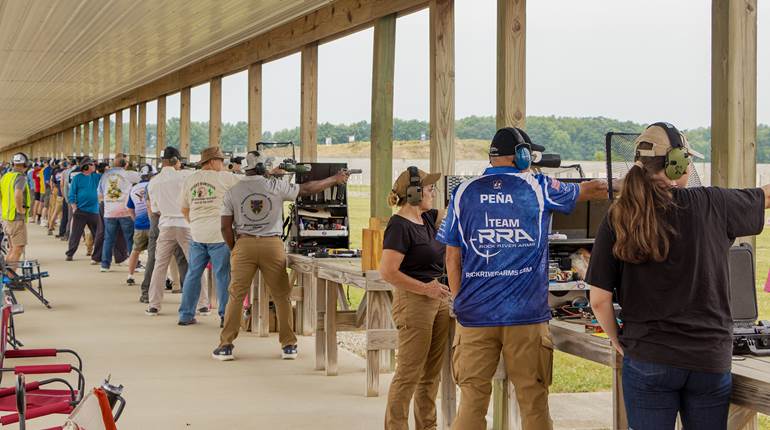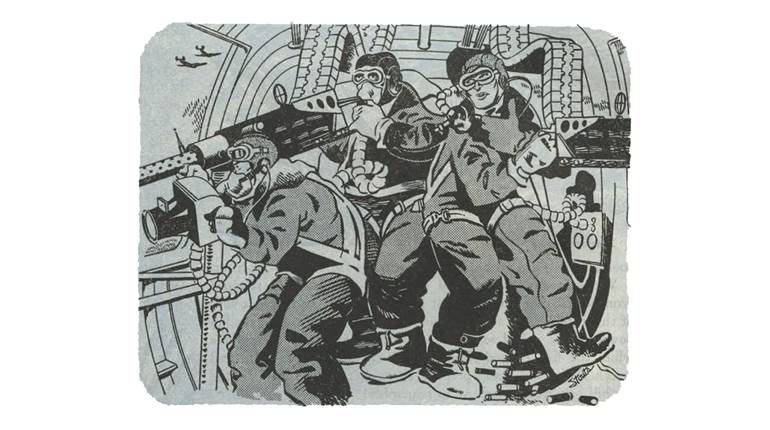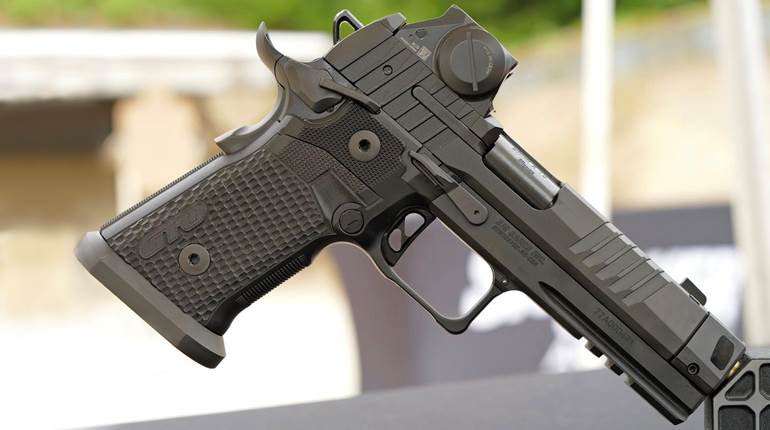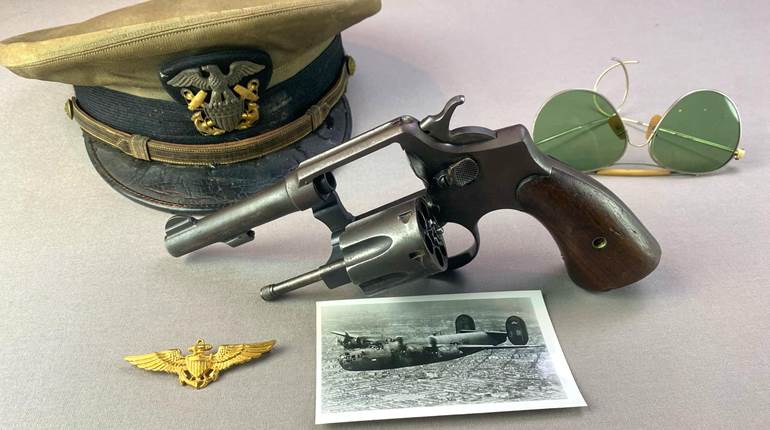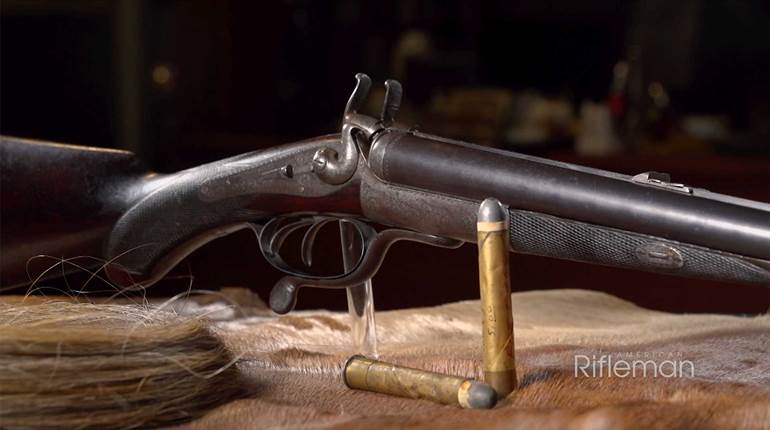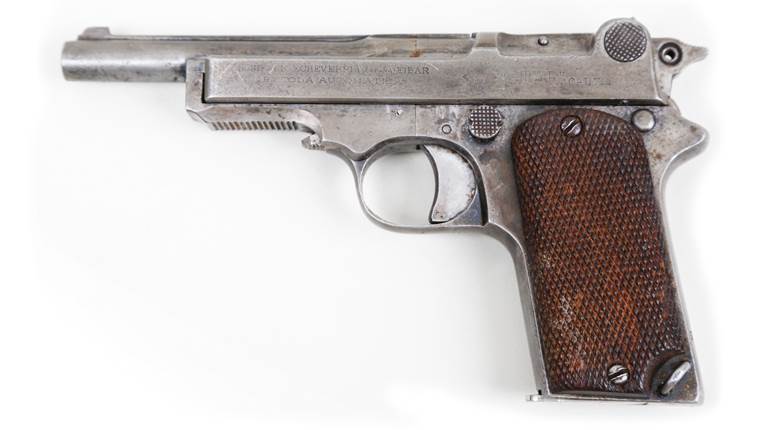
Images copyright Martin K.A. Morgan
It is not often that a story generates so much interest and enthusiasm, but this isn’t just any story. This is the story of 8,000 pieces of American history—8,000 artifacts that speak to the American experience during the 20th century. They were born of the World Wars, and they remind us of the era when imperial dynasties crumbled, when fascism threatened the international balance of power, and when the United States sent men to war with a .45 Automatic. These 8,000 pistols fought on battlefields from Europe to Southeast Asia, only to then be consigned to long-term storage in a government warehouse. Although at one time it looked like they might be destroyed, the story of these pistols has a happy ending.
In 2015, U.S. Congressman Mike Rogers (R) representing Alabama’s 3rd congressional district proposed an amendment to authorize the U.S. Army to turn over M1911 pistols, spare parts and accessories designated “surplus to the requirements of the Department of the Army” to the Civilian Marksmanship Program for sale to qualified buyers. As a gun owner and a believer in the Second Amendment, Rep. Rogers proposed the amendment as a means of eliminating unnecessary storage costs to the federal government while simultaneously promoting marksmanship activity and serving the interests of law-abiding collectors. Rogers recognized that the possible sale of these pistols would harmonize perfectly with the CMP’s mission and he described the measure as a “win–win” for the taxpayer.
Unsurprisingly, the amendment met opposition. Certain members of Congress expressed concerns that the release of these surplus M1911A1s might spark a crime wave or that the pistols might fall into the hands of individuals prohibited from owning a firearm. In the interest of avoiding such circumstances, the Defense Authorization Act of 2017 established a pilot program by limiting the release of the pistols to no more than 10,000 guns and no less than 8,000 guns per year. It also established a reporting requirement relating to any crimes that might be committed with released pistols. Initially, the release of the pistols was at the discretion of the Secretary of the Army, but then came the National Defense Authorization Act for Fiscal Year 2018, and it suspended the “discretionary authority” for transferring the pistols and repealed the congressionally mandated pilot program. This opened the door for the transfer of the pistols to begin—but first the Army had to be satisfied that they would be securely stored.

A chain link fence enclosure inside one of the CMP’s warehouses was assembled to store the guns initially, but the Army ultimately surprised the CMP with a requirement that it build a separate storage vault just for the M1911s. In record time, the largest bank vault in Calhoun County, Ala., had been built, and the Army was satisfied. Then in January, 96 crates containing 8,000 pistols were delivered to the Civilian Marksmanship Program’s warehouse at the CMP South facility in Oxford. The pistols have been sitting there in the vault since then as CMP staff prepares to make them available for sale later in the year.

The interior of the pistol vault at CMP South showing some of the crates containing M1911A1 pistols rebuilt by Anniston Army Depot. There are 25 individually packaged M1911A1s in each and their serial numbers are listed on each crate’s exterior. The one on top was packed in August 1987 and the one on the bottom was packed in June 1987. Note that the crates bear markings showing last and future inspection dates.
On April 2, CMP Chief Operating Officer Mark Johnson extended an invitation to American Rifleman to come to Anniston to have a look at the famous Army M1911s, and you can bet your bottom dollar that we wasted no time in getting down there. Our visit took place on Thursday, April 19, and it started with a bang when we were escorted into the building that now houses the brand new, impregnable, Army-approved storage vault. Editor-in-Chief Mark Keefe and I then spent the next two hours getting a close look at the guns, and we were greeted with some pleasant surprises. 
American Rifleman Editor-in-Chief Mark A. Keefe IV and Civilian Marksmanship Program Chief Operating Officer Mark Johnson in front of some of the 8,000 USGI surplus 1911 pistols inside the vault at CMP South.
The M1911s currently in the CMP’s vault came from two sources: the Army Museum System and the Defense Logistics Agency’s long term strategic reserve. The Army Museum System pistols are crated separate from the DLA guns, and they are mostly Model of 1911s. We spent almost an hour sorting through the museum crates, finding the pistols to be mostly of Colt manufacture with a variety of all original and mixed A1 parts. One Remington-UMC Model of 1911 discovered among the many Colts aroused great excitement. They all appeared to have original factory finish and they all are equipped with World War II-era plastic grips. There are even a handful of National Match M1911A1s among them.

The inside of one of the crates containing Model of 1911 pistols from the Army Museum System.
For all of their attractive and inherently collectible qualities though, these museum system guns represent the minority of the 8,000 currently on hand at the CMP and it is likely that they will all receive Auction Grade designation. On the other hand, the majority of the pistols currently in the vault are M1911A1s that were until recently in a Defense Logistics Agency warehouse. These pistols were rebuilt at Anniston Army Depot (“ANAD”) between 1978 and 1982, and they wear a light gray Parkerized finish. To get a better sense of how these guns did in long-term storage, we opened one of the DLA crates and unpacked Ithaca M1911A1 S/N 2088647. This gun was originally produced in 1945 and then ultimately went through the ANAD rebuild program in June 1978. Where it went and what it did in the years between production and rebuild is anyone’s guess, but after it was rebuilt, the pistol was packaged for long-term storage in 1987 and periodically opened, inspected, and repacked again. After having a look at Ithaca S/N 2088647, Mark Johnson indicated that it would go for general sale as a Service Grade M1911A1.



Ithaca M1911A1 S/N 2088647 and its box. This pistol was rebuilt at Anniston Army Depot in June 1978 and it is an example of the overall condition that the Service Grade CMP M1911A1s will present.



Ithaca M1911A1 S/N 2088647 is seen here with some of the crates containing surplus USGI pistols that will go on sale to qualified buyers in September.

Model of 1911 pistol S/N X2337—one of the 1911s from the Army Museum System that will go to the CMP's auction site.
When these pistols are made available for purchase later this year, they will be graded according to overall condition and sold at the following prices: Service Grade, $1,050 plus shipping; Field Grade, $950 plus shipping; and Rack Grade, $850 plus shipping.
In other words, the CMP just turned back the clock on G.I. M1911A1 prices by more than a decade. To get those prices though, several requirements and restrictions will apply to qualified buyers—some of which are new to the world of the Civilian Marksmanship Program. First of all, you will have to submit a separate order pack even if you are already qualified to purchase from the CMP’s rifle sales program. In addition to that, there is a lifetime limit of one pistol per qualified buyer and that even applies to the M1911s that go to the CMP’s auction site. Unlike the CMP’s rifle sales program, CMP 1911s cannot be delivered to your door—they can only be shipped to a Federal Firearms Licensee. The 03 Curio and Relic License is excluded from this program. Additionally, qualified buyers will also have to receive a “proceed” on two National Instant Criminal Background Checks: once at the CMP when the purchase is completed and again when the buyer picks up the pistol from his or her FFL. These requirements were not the CMP’s choice but rather a condition placed on the program by its authorizing legislation. All details relating to purchasing requirements are currently listed in detail on the CMP’s website along the complete M1911 program order packet.

This Remington/UMC Model of 1911 pistol is one of the 1911s from the Army Museum System that will go to the CMP's auction site.
The CMP will begin accepting orders for the M1911 and M1911A1 pistols currently in the warehouse on Sept. 4, 2018, so you will soon have a chance to buy one of these historically significant pieces of American military history. The only problem is that there are just 8,000 of them. The CMP expects to receive as many as 75,000 orders for the 8,000 pistols now sitting in the vault, so a lottery system will be used to select buyers. One thing is for certain, though. All of them will sell—making 8,000 enthusiasts, collectors and marksmen proud new owners of John Browning’s masterpiece.
Additional Reading:
The Keefe Report: CMP 1911s—Wonka Golden Ticket Unlikely
The Keefe Report: CMP 1911s—One Step Closer
The Keefe Report: CMP Mission Expands to Include M1911A1 Pistols
